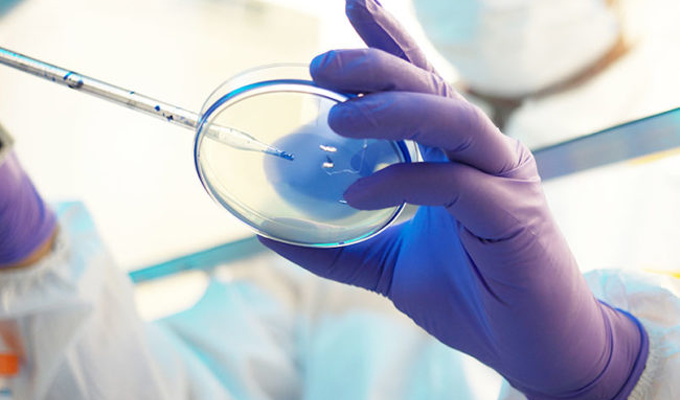Blood Clots and Chemotherapy
Other terms: Deep Vein Thrombosis (DVT), Pulmonary Embolus (PE), embolus, thrombus
What Is a Blood Clot?
A blood clot is a jelly-like mass of thickened blood. Your body needs to be able to clot blood as this is the normal way bleeding is stopped to begin the healing following an injury. This process involves complex chemical reactions between many substances that are present in the blood plasma. Many factors can contribute to the creation of blood clots, including some types of chemotherapy. However, blood clots can also be caused by biological factors not related to cancer or chemotherapy treatments.
A blood clot becomes harmful when it can block an artery or vein to stop the blood flow, termed thrombus. A thrombus in a brain artery can cause a stroke to occur. A thrombus blocking an artery in the heart can cause a heart attack. A thrombus in the leg or pelvic vein is called a deep vein thrombosis (DVT).
If a thrombus dislodges and travels through the bloodstream it is called an embolus. As it travels it may become lodged in a smaller blood vessel and cause a blockage. For example if it blocks an artery in the lung it is called a pulmonary embolism (PE).
Symptoms of Deep Vein Thrombosis (DVT):
- Pain in the calf or leg muscle, swelling, tenderness, discoloration, or prominent veins. All, one, or none of these may be present for a DVT to be present.
Symptoms of an Embolus:
When an embolus moves, it causes lack of blood flow. Symptoms depend on where the embolus travels and lodges:
- To the brain -stroke. Common symptoms of stroke are:
- Sudden numbness or weakness of face, arm or leg, especially on one side of the body
- Sudden confusion, trouble speaking or understanding
- Sudden trouble seeing in one or both eyes
- Sudden trouble walking, dizziness, loss of balance or coordination
- Sudden severe headache with no known cause
- To the heart - heart attack. Common symptoms of heart attack are:
- Uncomfortable pressure squeezing, fullness or pain in the center of your chest, it lasts more than a few minutes or goes away and comes back.
- Pain or discomfort in one or both arms, your back, neck, jaw or stomach.
- Feel out of breath with the chest discomfort, or before the chest discomfort.
- Break out in a cold sweat, feel sick to your stomach or light-headed.
- To the lungs - pulmonary embolism (PE). Classic symptoms of PE are:
- Coughing up blood, shortness of breath and chest pain.
- However, other symptoms may be present instead such as: pain in the back, shoulder or upper abdomen, dizziness, fainting, painful respiration, new onset of wheezing, any new heart arrhythmia, any other unexplained symptom referable to the chest.
- To the eye - sudden blindness in one eye.
These are life- threatening conditions or as in the case of clot to the eye can cause severe disability. Presence of these symptoms requires immediate care.
Risk Factors:
Several factors, including chemotherapy, can increase the risk of blood clots, patients with cancer are at higher risk, some other factors are:
- Decreased mobility, bed rest.
- Indwelling venous infusion catheters.
- Chemotherapy
- History of deep vein thrombosis
- Fractures
- Obesity
- Arteriosclerosis
- Oral contraceptives (birth control pills)
- Smoking
Tests Used to Diagnose a Blood Clot:
- Duplex Ultrasound (Doppler study): This test is used to look for a DVT.
- To look for DVT using ultrasound, the ultrasound transducer is placed against the skin and then is pressed inward firmly enough to compress the vein being examined. In an area of normal veins, the veins are easily compressed completely closed, while the muscular arteries are extremely resistant to compression.
- Where DVT is present, the veins do not collapse completely when pressure is applied using the ultrasound probe.
- Chest x-ray: This is a quick and painless procedure where a picture, or an x-ray, will be taken to look at the internal structures of your chest. The chest x-ray will look specifically at your lungs, heart, and ribs.
- This one-dimensional view may provide your healthcare provider with important information about what is happening inside your chest wall, and lung region.
- Lung scan: (Ventilation-Perfusion scan [VQ]) - Your doctor or healthcare provider will order this test if he or she suspects that you may have developed a blood clot in your lungs, (PE).
- A radioactive dye is injected into your vein. A camera photographs how the blood is flowing through your lungs.
- If there is a blockage in the flow of blood, this may mean that you have a blood clot.
- Venogram: Your doctor or healthcare provider may order this test if you are having a problem with the blood flow, through your veins, back to your heart.
- A radioactive dye is injected into the vein that needs to be examined. X-rays will be taken to determine the cause of the problem. One problem may be a blood clot.
- Other tests: blood tests to check the oxygen levels in the blood, clotting factors etc, or electrocardiogram (EKG) to check your heart rhythm may be performed as part of the evaluation.
This You Can Do for Blood Clots:
- If you are undergoing chemotherapy and you think you have a blood clot in your arm or leg, waiting to see what happens is not appropriate. If you have symptoms of a blood clot in your arm or leg, you should be seen immediately by your doctor. If you are unsure of your symptoms, call your health care professional.
Try to decrease blood clotting risk factors that can be controlled such as:
- Keep moving, do not prolong bed rest. An exercise routine can also be helpful, or if partially immobilized try keep the blood flow going by using other non-immobilized muscles in the lower extremity.
- Stop smoking.
- If placed on blood thinner medication such as warfarin (Coumadin®):
- Follow instructions regarding lab work and taking the medication.
- Be careful when using razors. We suggest an electric razor or hair-removing creams to minimize the chance of cuts.
- Use a soft toothbrush. Brush and floss gently to prevent bleeding from the gums.
- Call your doctor if you have any symptoms of illness, such as vomiting, diarrhea, infection, or fever. Illness can change the way blood thinners work.
- Always carry or wear identification that states you are taking blood thinners. In an emergency, you may not be able to speak for yourself.
- Avoid situations where you may get hurt at home or at work. Even minor injuries must be watched for bleeding because blood thinners affects clotting.
- Falls that cause bruising (bleeding under the skin) and cuts from sharp objects are more serious when you are taking blood thinners.
- Call your doctor if you have any injuries that involve falls or blows to the body or head.
Drugs that may be prescribed by your doctor:
- Once a diagnosis of a deep venous thrombosis is made is usually aimed at thinning the blood to prevent further formation of clots and an embolism.
- This treatment usually is started in the hospital where you are closely monitored.
- The treatment may continue for 6-12 weeks or you may be put on a lifetime level of medication for further prevention.
- Anticoagulants:
- Heparin comes in liquid form and is given by an injection under the skin or via an intravenous (IV) infusion.
- Warfarin (Coumadin®) comes in pill form.
- Enoxaparin (Lovenox®) comes in liquid form and is given by an injection under the skin (subcutaneous, SubQ)
When to Contact Your Doctor or Health Care Provider:
Seek emergency help immediately (Call 911) and notify your health care provider, it you experience:
- Symptoms of pulmonary embolism, heart attack or stroke.
Call your doctor or health care professional if:
- You have redness, swelling, warmth, or tenderness in your arm or leg.
- If you have pain in your leg that gets worse when you stand or walk.
Note: We strongly encourage you to talk with your health care professional about your specific medical condition and treatments. The information contained in this website is meant to be helpful and educational, but is not a substitute for medical advice.
Related Side Effects
Blood Clots has related side effects:
Clinical Trials
Search Cancer Clinical Trials
Carefully controlled studies to research the safety and benefits of new drugs and therapies.
SearchPeer Support
4th Angel Mentoring Program
Connect with a 4th Angel Mentor and speak to someone who understands.
4thangel.ccf.org
